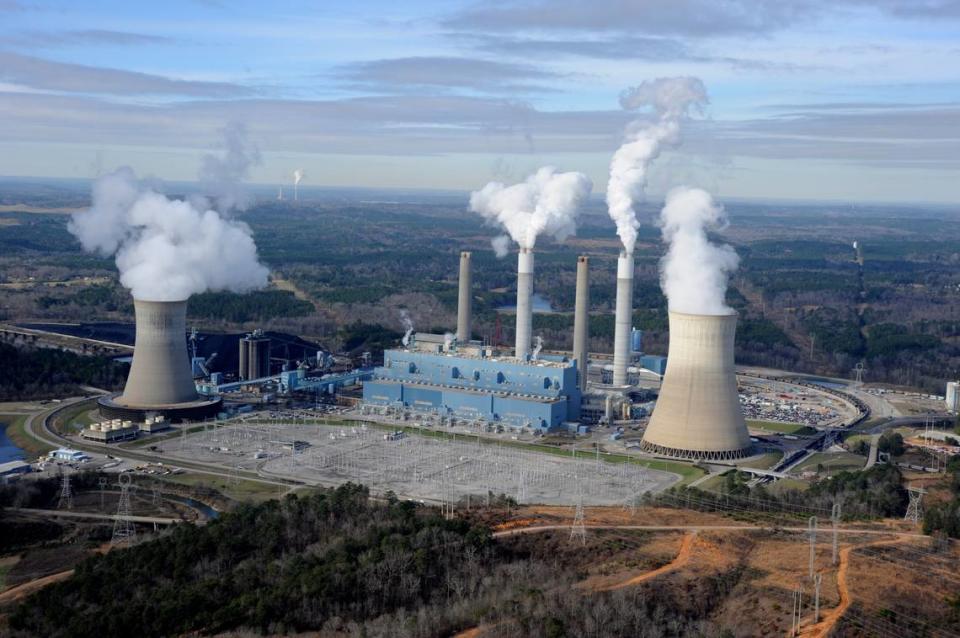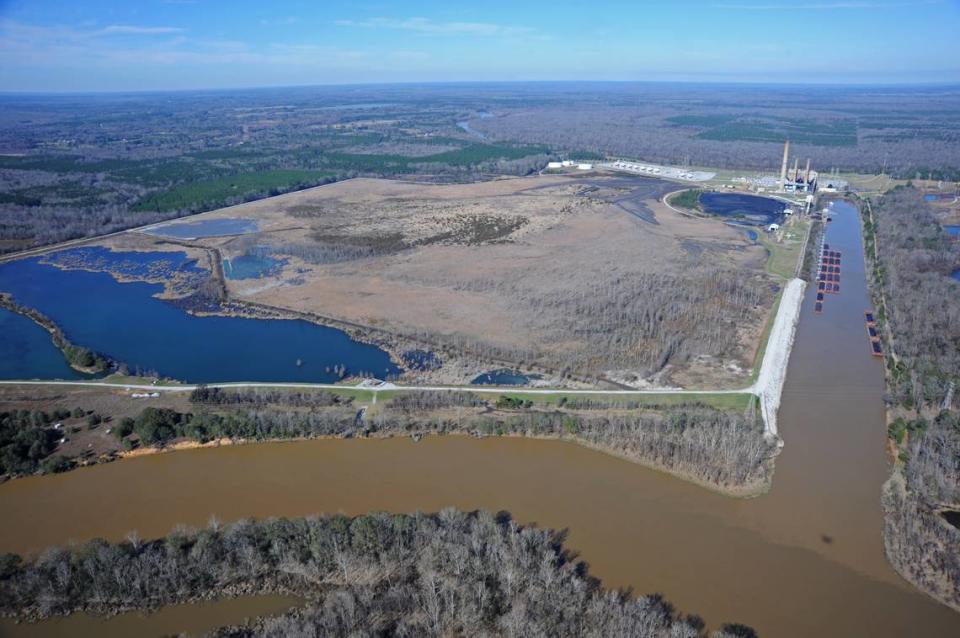Feds reject Alabama’s plan to dispose of toxic waste from coal-fired power plants
The federal government has rejected a plan from Alabama environmental regulators to dispose of toxic waste from coal-fired power plants.
On Thursday, the EPA proposed denying a coal ash waste management permit submitted by the Alabama Department of Environmental Management (ADEM).
This is the first time the EPA has rejected a plan from ADEM, specifically, a move that could have implications for to state agencies that manage coal ash in Georgia.
“This is a significant milestone in the effort to protect communities in Alabama from pollution to coal ash sites,” said Frank Holleman, senior lawyer at Southern Environmental Law Center. “This will cause utilities in Alabama to clean up their act and go about fixing Alabama’s coal ash problem.”

Coal ash is a byproduct of burning coal at a coal-fired power plant that typically sits atop water and has known health consequences. The ash has heavy concentrations of toxins like mercury, cadmium, lead, arsenic, and chromium that, when consumed through contaminated drinking water, can cause disease.
“Exposure can lead to cancer if ash isn’t properly managed,” Michael Regan, EPA Administrator said in a press release on Thursday. “Low-income and underserved communities are especially vulnerable to coal ash in waterways, groundwater, drinking water, and in the air.”
Coal ash spill disasters in 2008 in Kingston, Tennessee, and 2014 on the Dan River in North Carolina motivated the EPA to regulate coal ash disposal.
In 2015, the EPA created a national regulation known as the Coal Combustion Residual (CCR) rule, requiring utilities to submit a permit that outlines how they will properly dispose of coal ash and ensure it doesn’t leech into groundwater or surface water.
A year later CCR was amended to allow state agencies to run their own permit program. But the state permit needs to be as robust as the federal program. Typically this means removing the ash from an unlined pond if it is at risk of coming into contact with groundwater, putting it in landfills, or adequately lining ponds where the ash is kept. Coal ash can also be reused in cement or concrete.
Critics of ADEM suggest they have consistently rubber-stamped any plans by Alabama Power for years.
Black Warrior Riverkeeper, a Birmingham-based river restoration nonprofit, applauded the EPA’s decision. Nelson Brooke, who runs the Riverkeeper Patrol Program at Black Warrior, has been asking Alabama Power and ADEM to do a better job of handling coal ash for over a decade.
“We’re excited to see the EPA’s proposed denial of the state’s program,” Brooke said. “ADEM has allowed Alabama Power to leave coal ash by the river, sitting on top of wetlands and streams for years. Now Alabama Power is going to have to go back to the drawing board to seriously consider alternatives to deal with their toxic waste.”
The CCR permit that ADEM submitted had clear deficiencies, according to the EPA.
“ADEM’s permits are not as protective as the federal CCR regulations with closure requirements for unlined surface impoundments, groundwater monitoring networks, and corrective action requirements,” according to the EPA press release.
By law, The EPA has to allow the public to comment on any proposed plan. For the next 60 days, anyone can comment on the proposed denial. There will be a public hearing in Montgomery, Alabama on Sept. 20 and an online public hearing on Sept. 27.
How this could impact Georgia
Brooke suggests this is an opportunity to get things right.
“Future generations are going to look back on this, judging what we did or didn’t do,” he said. “We encourage people far and wide to weigh in on this. It’s going to take a lot of support for the EPA to stand their ground. The usual suspects of Alabama Power will weigh in heavy opposition.”
The Miller Steam Plant in Jefferson County, 16 miles north of Birmingham, is the largest CO2 emitter in the United States. The 45-year-old coal power plant next to Village Creek and Locust Fork of the Black Warrior River sends CO2 dust and coal ash into drinking water near the community of West Jefferson 24 hours a day, seven days a week.
“There are a lot of people getting sick in the community of West Jefferson,” Brooke said. “The water pollution eventually migrates down to Mobile Bay and into the Gulf as well.”
The implications of the EPA denying a permit go beyond Alabama’s process and standards.
“What the EPA has said has equal force for the Georgia program,” Holleman said.
Georgia has a CCR permitting program, but the EPA could force Georgia Power to change its plan to clean up coal ash.


